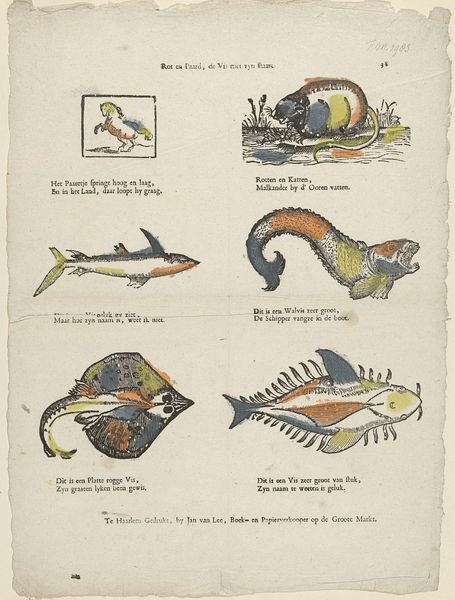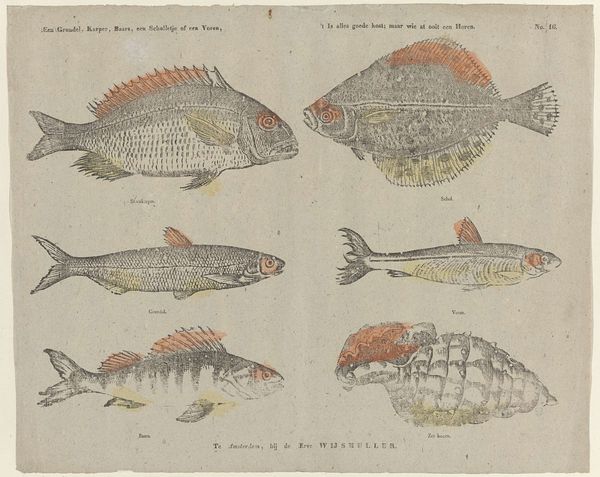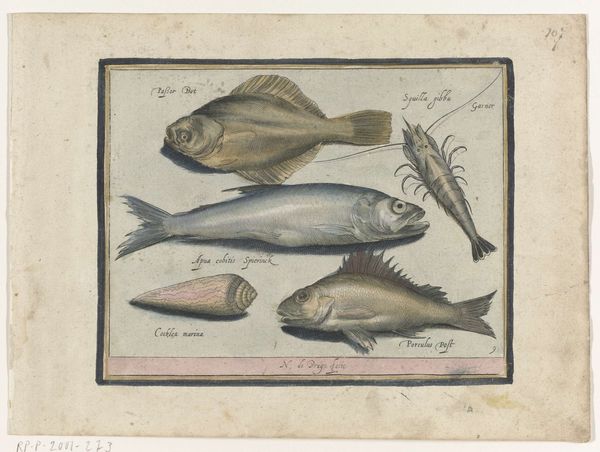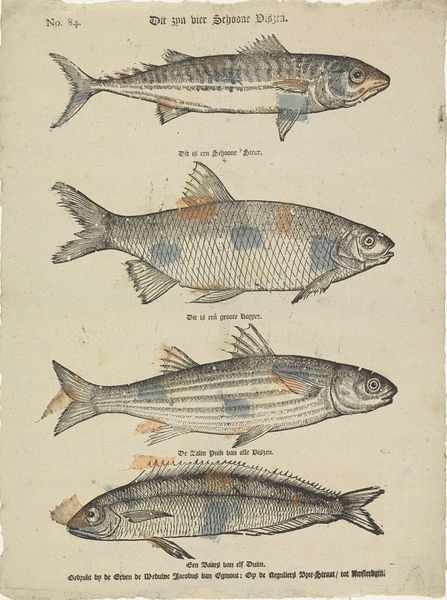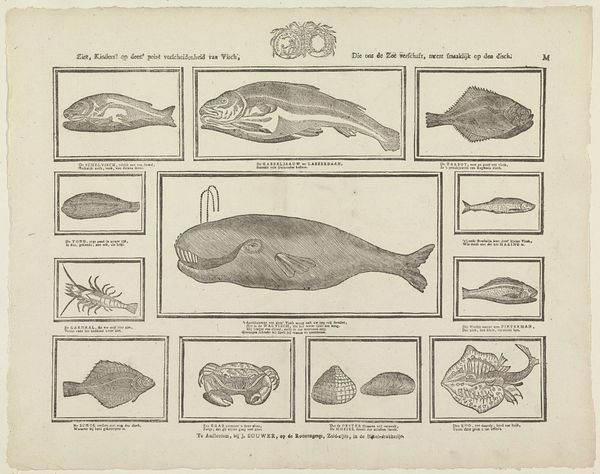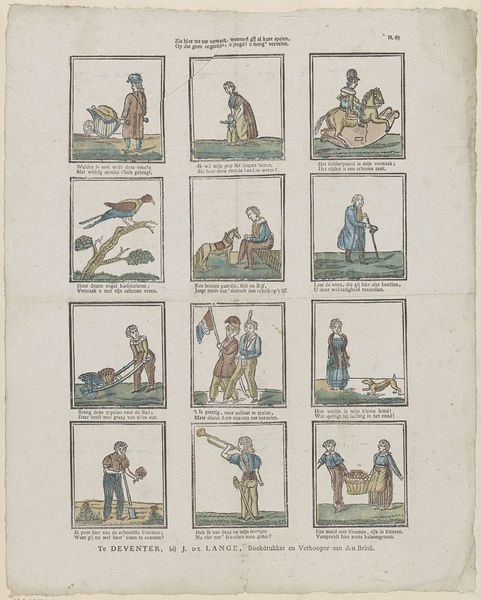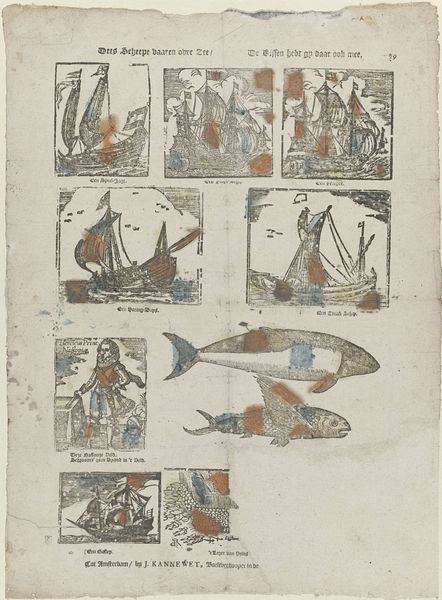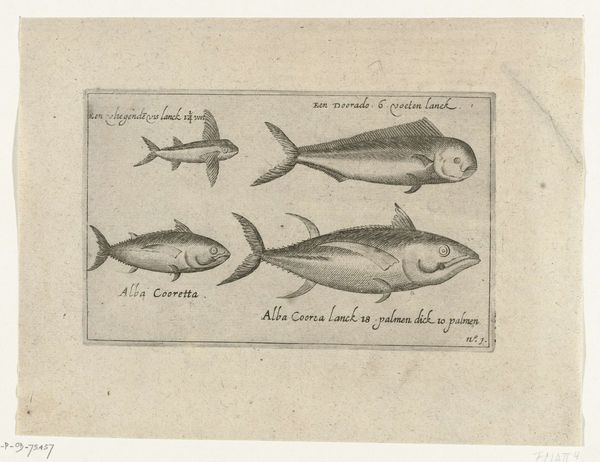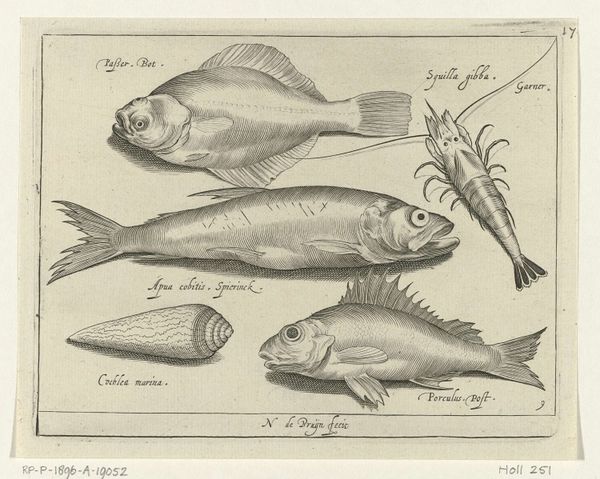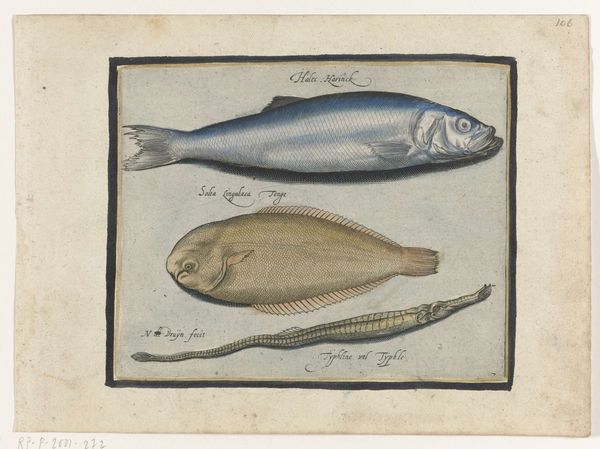
Hier vinde gij een negental van dieren, groot en klein / die, uitgezondert èèn, voor. 't menschdom nuttig zyn 1836 - 1849
0:00
0:00
graphic-art, print, engraving
#
graphic-art
# print
#
engraving
#
realism
Dimensions: height 427 mm, width 333 mm
Copyright: Rijks Museum: Open Domain
Curator: This print, "Hier vinde gij een negental van dieren, groot en klein...", by D. Lijsen, dating from between 1836 and 1849, is a fascinating example of early Dutch natural history illustration. The use of engraving gives it a scientific, almost taxonomic feel. What do you see in this work, Editor? Editor: Well, initially, I’m struck by the... peculiar colouring! The red and blue stripes on each animal are quite striking against the muted background of the print itself. It feels almost… coded, somehow. Curator: Exactly! These colours aren’t merely decorative; they speak volumes about the socio-political context of the time. Consider the date – this print emerges during a period of burgeoning Dutch nationalism. Don't you think the colors could represent Dutch pride and perhaps subtly convey messages about Dutch identity and resources? Editor: So, the colours become a kind of visual shorthand for Dutchness itself? Are you suggesting these animals, these resources, are somehow being claimed or presented *as* inherently Dutch? Curator: Precisely. The print can be seen as a tool for constructing national identity. It subtly promotes a sense of ownership and connection to the land, natural resources, and even the animals themselves. Think about the audiences consuming such images. What impact would such messages have? Editor: It’s amazing how much history can be embedded within what seems like a simple image. I'll never look at an old print the same way again! Curator: And hopefully you'll approach everything else a bit differently as well! It's crucial to consider art as existing within cultural, social, and political landscapes.
Comments
No comments
Be the first to comment and join the conversation on the ultimate creative platform.
